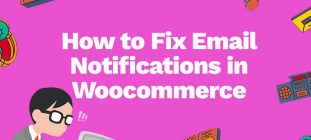
In the age of social media, influencer marketing has become a popular tactic for businesses to promote their brand. By partnering with influencers, businesses can reach a vast audience and potentially increase their customer base. However, small businesses often believe that influencer marketing is reserved for big corporations with huge budgets. That’s not true – it turns out influencer marketing can be accessible and effective for small businesses with small budgets as well!
In this blog post, we’ll share how small businesses can leverage influencer marketing to help promote their brand, even with a budget in the hundreds of dollars. This step-by-step guide is all you need to get started. Let’s dig in.
1. Identify your target audience
Before beginning your influencer marketing strategy, it’s essential to identify your target audience. Determine who you’re trying to reach and what kind of influencers that audience follows. For example, if you’re a pet store looking to promote your business, you may want to target influencers who specialize in pet care or memes about pets. You could also consider influencers that are aligned with your target audience in other ways, such as targeting Wall Street influencers for financial licensing test prep like Achievable has done.
2. Find relevant influencers
Once you’ve identified your target audience, it’s time to start searching for influencers. Nowadays, social media is the go-to platform for finding influencers. Check out TikTok (and its Creator Marketplace), Instagram, YouTube, and other social media channels. Look for influencers who appeal to your target audience. If you run a local business, be sure to focus on influencers in your geographic area.
Using a spreadsheet, make a list of the influencers you want to work with, including their name, social media account URL, number of followers, and contact details. Also include their engagement metrics, such as comments, likes, and shares on a typical video. The more active the engagement, the more eyeballs your campaign will reach. This is also key for weeding out influencers that may have bought followers.
3. Develop a project plan
Once you have a list of influencers, it’s time to create a project plan. Know what kind of content you want to publish and what message you want to convey. For instance, if you want an influencer to showcase your products, provide them with a sample or a discount code. Additionally, think about the type of content your audience enjoys, such as short videos, photos, or podcasts.

4. Reach out to your target influencers
After finalizing your project plan, it’s time to start reaching out to your list of influencers. Influencers are likely to receive numerous emails daily, so it’s essential to be concise and straightforward. Be cordial and mention who you are, what your business does and why it aligns with their brand, what you’re looking to promote, and the expected deliverables. Wait for a reply and confirm the details of the partnership, such as payment, deliverables and deadlines. Then, you should be ready to get started.
5. Set up campaign tracking
For an online campaign, setting up tracking can be done in a couple of ways. We recommend tracking clicks to your website by using a trackable link service like Bitly as the URL that the influencer adds to their post or comments. You can also give each influencer a special promo code with a discount to encourage customers to use the code and contribute to tracking your campaign. You will know that people who used the influencer’s specific code either saw or heard about your campaign. Just make sure each influencer gets their own code so you can compare their performance.
For an offline campaign, you want to do a tech-free version of the above. The best way to do this is through the same promo code method, where you ask people to give a special code when checking out at the register for a discount. If you are only using one influencer, then you can also compare traffic between previous weeks and the weeks after the influencer campaign.
6. Monitor the performance of your campaign
Your influencer marketing campaign is now up and running! Don’t forget to keep track of the performance of your campaign. Check how your influencer’s content performs, monitor engagement metrics, such as likes, comments, shares, reach, and conversion rates. It’s important to remember that influencers don’t control their customers, so if a campaign doesn’t work, it could be for any number of reasons and is not necessarily the influencer’s fault. Influencer marketing involves a lot of trial and error, but the influencers that resonate with your target customer will more than make up for the difference.
Conclusion
Influencer marketing is a powerful strategy that even small businesses can use to boost their brand awareness and drive sales. By collaborating with influencers, small businesses can reach their target audience, drive actions including sales online or offline, and promote their own social accounts. Don’t be afraid to take the leap into influencer marketing, and you may see serious growth in your business!


















